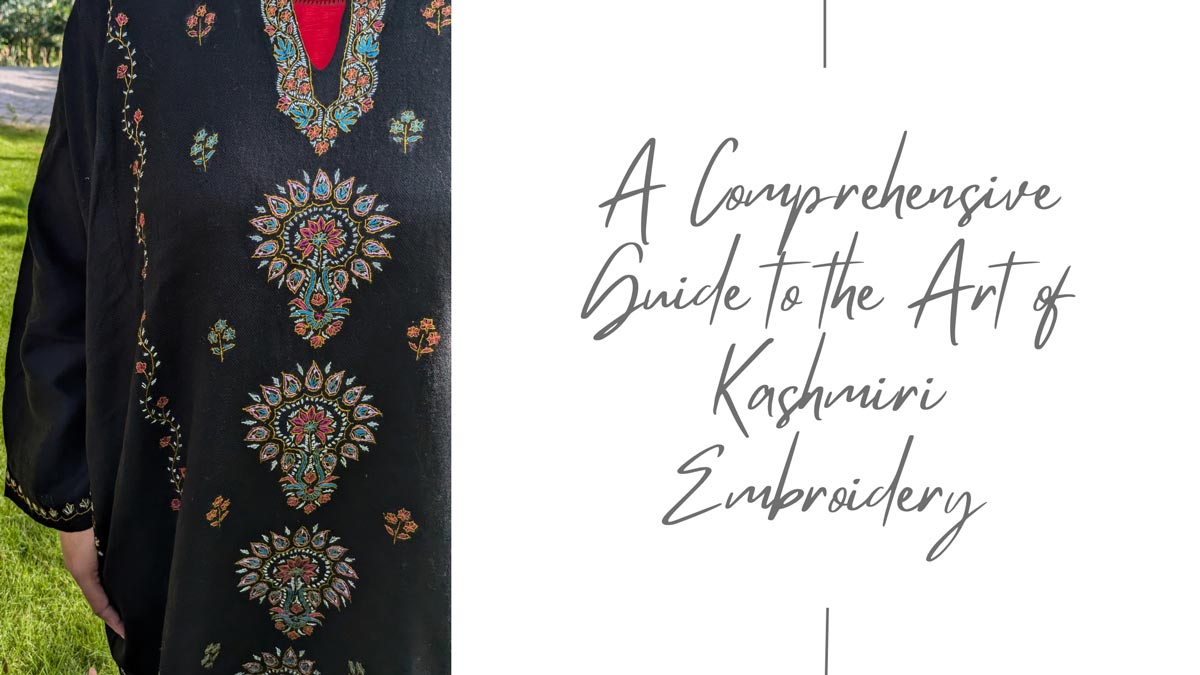
Introduction to Kashmiri Embroidery
Kashmiri embroidery is a heritage craft renowned for its elegance and fine detail. This embroidery tradition, rooted in the valley of Kashmir, reflects the region’s cultural richness and is known for the skillful and intricate designs that are typically inspired by the natural beauty of the Himalayan landscape. The legacy of Kashmiri embroidery is carried through various motifs, techniques, and items, each embodying the historical and artistic spirit of Kashmir.
Historical Significance of Kashmiri Embroidery
Kashmiri embroidery has a history spanning centuries, originating during the reign of ancient empires. Historically, Kashmiri artisans have used their craft to symbolize beauty, status, and cultural heritage, with influences drawn from Persian and Mughal art. This embroidery has transcended generations, creating masterpieces that connect the past with the present, making each piece not just an item of beauty but a living artifact of history.
Key Styles and Techniques in Kashmiri Embroidery
1. Aari Work
Aari embroidery, also known as “hook work,” is a distinctive style that uses a specialized hooked needle called an “aari” to create fine chain stitches. The technique enables artisans to produce intricate floral patterns quickly, often on delicate fabrics like silk and pashmina. The result is a continuous, flowing design with a refined, lace-like appearance.
2. Sozni Embroidery
Sozni work is among the most popular forms of Kashmiri embroidery, recognized for its delicate, needle-point detailing. This technique uses fine silk or cotton threads to create patterns that are predominantly floral or paisley. Artisans utilize two shades of thread for shading effects, which adds depth and dimension, achieving a refined, almost painted look.
3. Tilla Work
Tilla embroidery is a luxury form of embellishment using metallic threads, typically gold or silver, and is reserved for high-end attire. This style requires precision and patience, as artisans meticulously lay metallic threads to create ornate borders and motifs, often on wedding attire and festive wear.
4. Kashida Work
Kashida is a traditional style that encompasses the essence of Kashmiri embroidery. It is characterized by the use of vibrant threads in designs that depict nature, including flowers, leaves, birds, and vines. Kashida is often found on shawls, scarves, and household linens, bringing life to everyday items with rich patterns and vibrant colors.
Common Motifs in Kashmiri Embroidery
Kashmiri embroidery is deeply inspired by the natural surroundings of the region. Each motif carries a unique symbolism that adds depth to the artistry.
- Chinar Leaf: Represents Kashmir’s iconic Chinar trees, symbolizing beauty and resilience.
- Paisley Patterns: Symbolic of fertility and abundance, these teardrop shapes are a staple in many traditional designs.
- Birds and Flowers: Commonly depicting doves, sparrows, and various blossoms, these motifs are representations of peace, nature, and tranquility.
Popular Products Embellished with Kashmiri Embroidery
1. Pashmina Shawls
Pashmina shawls are iconic and luxurious pieces that showcase the finest Kashmiri embroidery. Lightweight yet warm, they are typically adorned with Sozni or Tilla work, making each shawl a piece of wearable art.
2. Kurtas and Sarees
Embroidered kurtas and sarees are beloved choices for festive and traditional occasions. These garments often display elaborate Kashida and Aari work that emphasizes the elegance of Kashmiri designs.
3. Home Décor Items
Kashmiri embroidery extends beyond clothing into home décor, including cushion covers, bedspreads, and wall hangings. Each piece, whether embroidered with paisleys or Chinar leaves, adds a unique touch of Kashmir to any space.
Techniques for Maintaining Kashmiri Embroidery
Preserving the beauty of Kashmiri embroidery requires careful attention. Here are some maintenance tips to ensure the longevity of these items:
- Dry Cleaning is preferable, especially for pieces with metallic Tilla work.
- Storage in Soft Cloth helps protect the fabric from moisture and dust.
- Limited Sun Exposure prevents color fading and preserves thread quality.
Why Kashmiri Embroidery is Special
Kashmiri embroidery is not just a craft; it is an expression of Kashmir’s history, landscape, and culture. The intricate stitches and motifs symbolize stories that artisans have passed down for generations. Each piece reflects the passion and dedication of Kashmiri craftsmen, ensuring that every item is unique and valuable.
Conclusion
Kashmiri embroidery remains a treasured art form, celebrated worldwide for its beauty, history, and cultural resonance. By incorporating nature-inspired motifs and using time-honored techniques, Kashmiri artisans continue to captivate hearts and bring Kashmir’s heritage to a global audience.